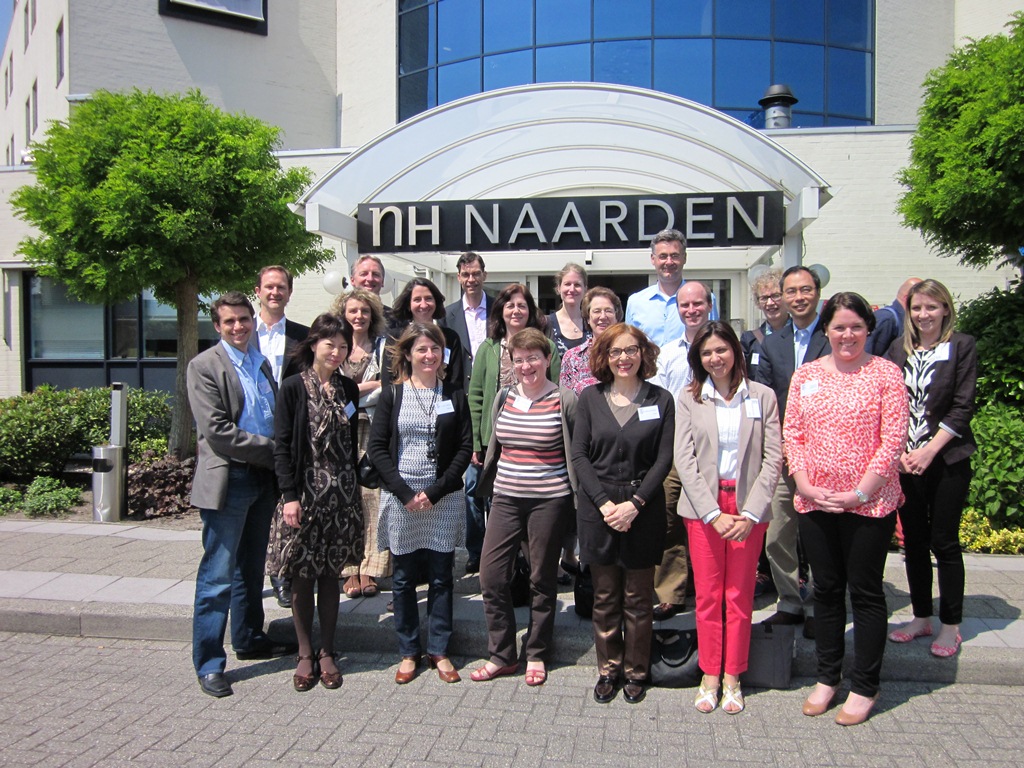FHL1 related myopathies: towards an FHL1 related myopathy consortium
- Number 199
- Date 6 June 2013
Location: Naarden
Twenty participants from 10 countries (Australia, Austria, Canada, Egypt, France, Germany, Italy, Japan, United Kingdom, USA) attended an ENMC workshop on the topic of “Four-and- an-Half LIM protein 1” (FHL1) related myopathies which include the diseases known as Reducing Bodies myopathies (RBM), X-linked scapula-peroneal myopathy (X-SPM), X-linked myopathy with postural muscle atrophy (X-MPMA), Emery-Dreifuss muscular dystrophy (EDMD6) and hypertrophic cardiomyopathy (HCM). Participants included biochemists, biologists, pathologists, molecular geneticists, neurologists, cardiologists, and paediatricians.
FHL1-related myopathies are a newly described group of neuromuscular disorders caused by mutations in the FHL1 gene, all first recognized over a brief period of time in 2008-2009. The spectrum ranges from severe and progressive early childhood forms to milder adult onset disease, often with important cardiac manifestations. The FHL1 gene is located on the X-chromosome and encodes for 3 isoforms of the protein, that are referred to as FHL1A, B and C. While FHL1A appears to be the more abundantly expressed form, the others are also expressed in both skeletal and cardiac muscle, but their precise respective roles are not yet clear.
The meeting covered a wide area of topics, ranging from the clinical presentations associated with FHL1mutations, muscle pathology, molecular genetics to the exploration of the molecular processes leading to the diseases.
The update of the different clinical phenotypes and their associated gene defects were reported by several participants and clearly highlighted two subgroups of diseases: one comprising RBM and X-SPM associated to mutations modifying the LIM2 domain of the 3 isoforms and leading to the occurrence of reducing bodies in the muscle biopsy, and the second comprising X-MPMA, EDMD and HCM associated to mutations modifying differently the FHL1 isoforms either by affecting the LIM3/LIM4 domain or by leading to truncated proteins. The participants clearly recognized the need for patient registry to better evaluate the natural history of these disorders and hence arrive at better proactive management of patients afflicted by an FHL1 related disorder.
Studies on the mechanisms linking FHL1 mutations to muscle and heart pathology were reported in animal models of the disease and in cell cultures systems reproducing patient mutations, at the moment focused on the major FHL1A isoform. These ongoing studies will be essential in identifying the molecular mechanisms and opportunities for therapeutic interventions in this newly recognized group of disorders of muscle.
The meeting succeeded in forming a new FHL1 related myopathies consortium, which then put into place, concrete steps towards a productive international clinical and scientific collaborative effort to accelerate progress across the entire nascent field.
A full report is published in Neuromuscular Disorders (pdf).

ENMC
Lt. generaal van Heutszlaan 6
3743 JN BAARN
The Netherlands
+ 31- 35-5480481
enmc@enmc.org
